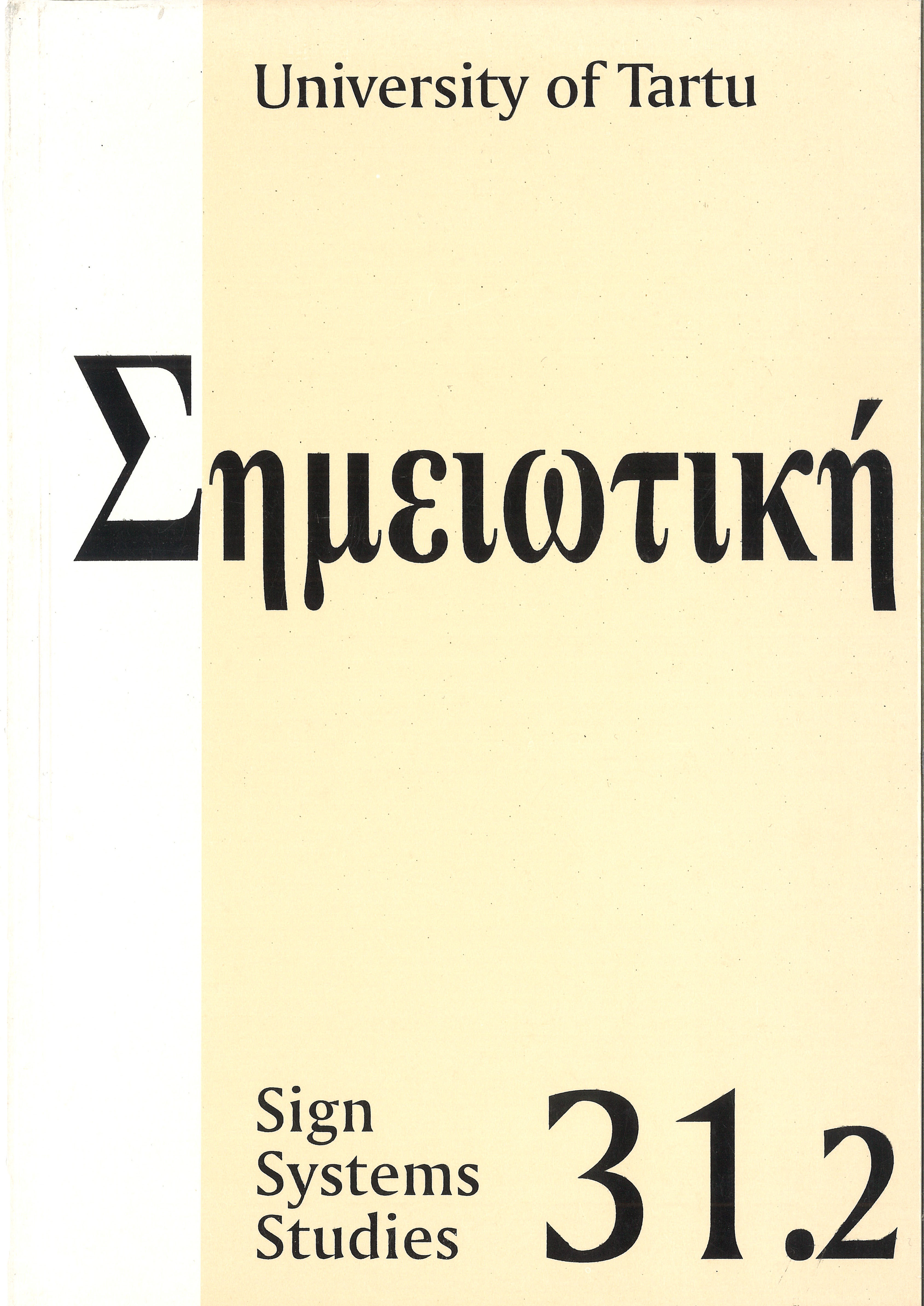Semiospherical understanding: Textuality
DOI:
https://doi.org/10.12697/SSS.2003.31.2.01Abstract
The semiospherical approach to semiotics and especially to semiotics of culture entails the need of juxtaposing several terminological fields. Among the most important, the fields of textuality, chronotopicality, and multimodality or multimediality should be listed. Textuality in this paper denotes a general principle with the help of which it is possible to observe and to interpret different aspects of the workings of culture. Textuality combines in itself text as a well-defined artefact and textualization as an abstraction (presentation or definition as text). In culture, we can pose in principle the same questions both to a concrete and to an abstract text, although an abstract text is only an operational means for defining, with the help of textualization, a certain phenomenon in the interests of a holistic and systemic analysis. The practice of textualization in turn helps us to understand the necessity of distinguishing between articulation emerging from the textual material itself and articulation ensuing from textuality or textualization — the former provides for comparability between texts made from the same material, the latter makes comparable all textualized phenomena irrespective of their material. Textuality is a possibility that culture offers to its analyser, and at the same time it is an ontological property of culture and an epistemological principle for investigating culture.


